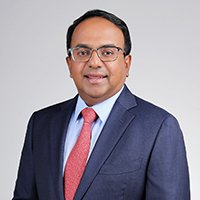From a standing start just a few years ago, ST Telemedia Global Data Centres (STT GDC) has emerged as a leading data center provider, with six facilities in Singapore, and some 50 more across Asia and Europe under well-known brand names such as GDS Services in China and Virtus in the UK.
Business leader
Earlier this month in Hong Kong, at an Awards Gala marking the conclusion of the DCD>Converged conference. STT GDC CEO Bruno Lopez was chosen as DCD’s Business Leader of the Year 2017 award for the Asia Pacific - an award designed to recognize a company or an individual that has contributed to build the profile of the data center industry to key stakeholder groups such as investors, shareholders or the government sector in the Asia Pacific region.
Lopez said the success would not have been possible without the entire STT GDC team giving support at every level. ”We have had a focused leadership strategy and we will continue to ramp up our business expansion, to fulfill the fast-growing requirements of new and existing customers in today’s digital age,” he told DCD.
Growth formula
The key to the rapid rise of STT GDC can be traced to its blended strategy, which sees it building some data centers, acquiring others and partnering with local companies when venturing into new markets. Lopez explains: “As a long-term strategic investor and partner, we take a calculated, collaborative approach when venturing into new markets, partnering with local companies with potential.”
“[We] ensure that our interests are aligned with other providers in our portfolio, intending to build sustainable businesses. We work on a differentiated ‘investor-operator’ model with STT GDC as an active enlightened investor, heavily engaged with high quality local partners and management teams to create a world class offering to global customers,” he said.
To ensure that portfolio companies are on the same page, STT GDC established a Centre of Operational Excellence department to ensure knowledge-sharing of the industry’s key growth drivers and challenges, allowing STT GDC to identify key global trends to ensures that it stays one step ahead of the competition.
Data consumption is growing
If there is one thing that STT GDC would have done differently, it would be growing even faster in key markets to support the growth the firm is seeing from its global customers, said Lopez. Noting that the need for data centers remain very strong, he pointed to a report from PWC which forecasts the data consumption in Asia Pacific – a growth driver for data centers – will grow at 30-60 percent per annum between 2015 and 2020.
“Even developed economies in the region, such as Japan, are expected to experience excellent growth per annum. I believe that we are all of the consensus that digitization has resulted in phenomenal increases in information being generated and the resulting data traffic flow, these translate to demands being made on network, computing and storage,” he said.
And hybrid IT infrastructure is an increasingly attractive architecture to deal with this demand, says Lopez: “[On that front] STT GDC is uniquely positioned to provide through our strategically located data centers across Singapore, China and India and also STT Connect’s hybrid cloud services.”
Looking ahead to 2018
“[We] helped the company more than double its data center footprint and also supported GDS in its listing on NASDAQ, which aided in accelerating its growth to meet market demands. They are now the undisputed market leader in the high-performance data center market in China,” said Lopez on the company’s investment in GDS three years ago. “We are well on our way to reprising the same success in UK, India and Singapore through VIRTUS and STT GDC India and STT GDC Singapore.”
Despite having over 400MW of capacity under its banner, the company has no plans to slow down for now. Lopez says STT GDC is planning to continue with a focus of meeting the needs of its customers, as well as to grow its already formidable platform.
“We stay committed to venture into new markets including Asia-Pacific and Europe, continuing to strengthen and progress our mandate to build a global data center platform, to support the growth of the digital economy globally while retaining local expertise,” he said.

